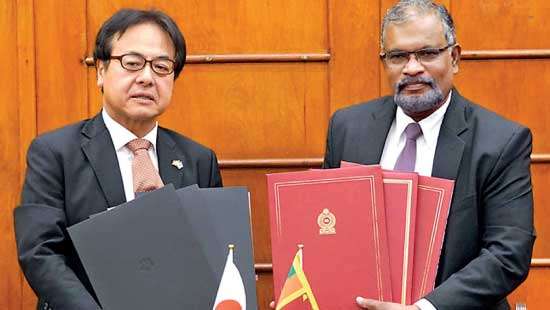Reply To:
Name - Reply Comment
Last Updated : 2024-05-05 14:01:00
In April 2022 our country was declared bankrupt. We were unable to import basic needs such as food, fuel, cooking gas, medicines and other necessities. A sudden ban on the import of petroleum-based fertiliser nearly killed some of our main export crops such as tea, rubber and coconut. Soon shop shelves ran empty. Long queues formed around fuel depots. Amid the turmoil, the executive president fled the country.
A situation of anarchy was eased with the election of President Wickremesinghe to the presidency by Parliament. Wickremesinghe was able to steady the ship and prevent the country from sliding into anarchy.
Today, for the first time in three years gross official reserves crossed the US$4 billion mark at end of December 2023.
This turnaround has been made possible via a debt restructuring facility extended by the International Monetary Fund (IMF), remittances from expatriate workers, earnings from tourism and export industries such as tea, rubber, coconut and the garment manufacturing sector.
Worker remittances (mainly female domestic workers in the Gulf region) topped the US$4 billion mark.
Tourism revenue surpassed $2.1 billion in 2023, while tea exports for 2023 earned a record Rs. 428.29 billion posting an increase of Rs.17.24 billion or 4% as against the previous year’s performance.
Meanwhile the apparel manufacturing sector -Sri Lanka’s largest industrial exporter earned $5.95 billion in 2022 but earnings were expected to fall below this figure in 2023 due to the ban on imports.
What many of us do not realise is that most of our foreign exchange earnings, which keep the economy afloat are the fruits of the labour of poverty-stricken rural women of our country.
The vast majority of our expatriate workers comprise females working in the Gulf region. A large number of them undergo very stressful conditions and it is their labour which brings in the biggest portion of the foreign exchange.
Tea, rubber and coconut formed the backbone of our export trade until recently.
Yet, even today the tea workers remain the most poorly paid workforce in the country.
A study initiated by the Institute for Social Development in 2018 shows while a basic living wage in the estate sector required a monthly income of Rs.1,108 per day, the salaries paid to these workers amounted to a mere Rs.750 per day! More recently the government raised the daily wage paid to a worker to Rs.1,000 per day.
However, there are conditions attached to the rise in salary. Workers must pick at least 18kg (40lb) a day to earn the Rs.1,000. If the pick is less, they get a lower rate for each kilo.
But the rising cost of living and inflation has in real terms lowered the value of their take-home wage. It was therefore not surprising when in January, the UN World Food Programme estimated that 44% of families in tea estate areas were food insecure.
The housing conditions of workers are atrocious. A family unit comprises between four to five members. These families live in10 x 12 sq ft barrack-style housing units. Most of these houses have no running water. Toilet facilities are minimal.
In the garment and apparel sector too, most workers (again female) are mainly from rural backgrounds. They are forced to reside in overcrowded chummeries that dot the vicinity of the Free Trade Zones. The workers too are hampered by the fact that production has fallen due to the ban on imports in the face of the financial crisis. Sadly their wages have dropped as a result.
Many of these young women are forced to sell their bodies to make up for the drop in their income.
Is it not a shame we treat the main income earners of this country in such a shabby fashion? Is it because they are female that we treat them so badly?
Their plight cries to the heavens for justice.

04 May 2024
MoreBryan Ekenaike Saturday, 20 April 2024 01:31 PM
Every thing said here is very true. The female population of SL have been in the forefront of the earnings of the country with absolutely no recognition from any quarter. Whether its in the country or overseas a greater majority of females in SL have been illtreated and subjected to most inhuman conditions. Where are the females in Diyawana Oya and why are they not objecting to the sheer 'bastardisation' of they own gender?.
Add comment
Comments will be edited (grammar, spelling and slang) and authorized at the discretion of Daily Mirror online. The website also has the right not to publish selected comments.
Reply To:
Name - Reply Comment
